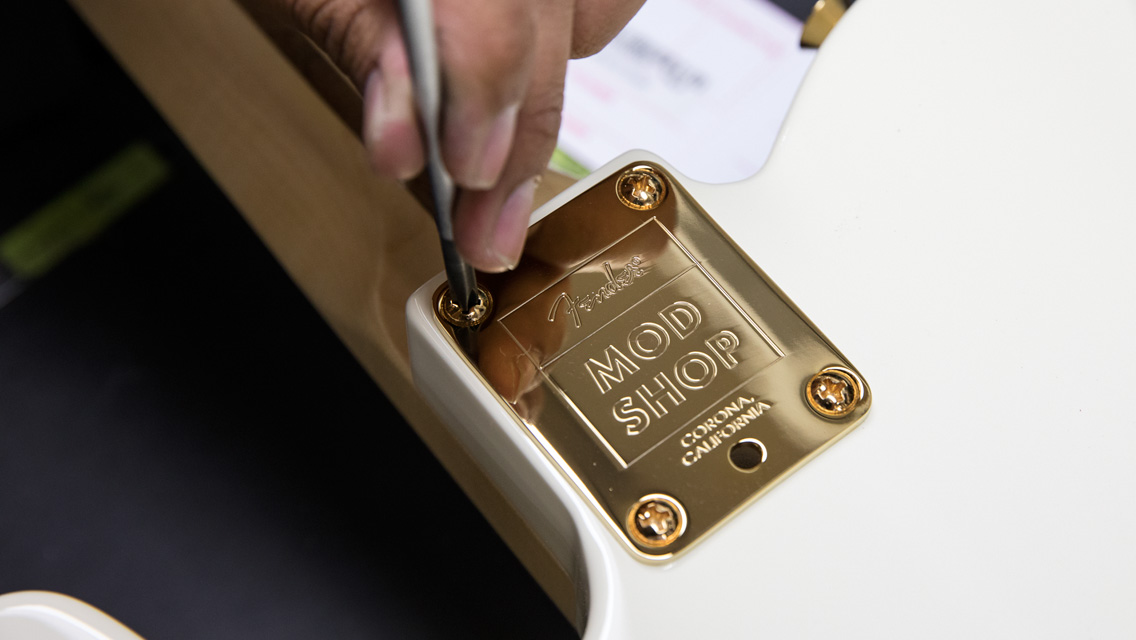
Sections
One of the more charmingly nicknamed elements of Fender electric instrument anatomy is the so-called “skunk stripe.”
In guitar terminology, skunk stripe refers to the thin walnut strip running down the back of the necks of many Fender instruments. The purpose of this walnut strip is simple—it fills in the channel routed out of the back of the neck for placement of the truss rod. Fender necks are typically made of lighter-colored maple, so the darker walnut strip creates considerable contrast, and this is what long ago led to the affectionate nickname.
The design dates back to the early 1950s for Fender instruments, and possibly further back for other instrument makers (who didn’t necessarily use walnut). While some makers other than Fender continue to use a rear-neck-channel design, the term skunk stripe most often refers to Fender instruments that have it.
A one-piece maple neck/fingerboard with a skunk stripe was standard at Fender from 1950 to 1958, except for a few very early Esquire guitars that had no truss rod. When rosewood fingerboards were introduced on the Jazzmaster in 1958 and made standard on other Fender models in mid 1959, skunk stripes were rendered unnecessary because the truss rods channels on those instruments were routed into the front of the neck rather than the back, and then covered by the glued-on fingerboards.
Rosewood-fingerboard instruments with no skunk stripe remained the standard at Fender throughout most of the 1960s, though during this period a two-piece maple neck/maple fingerboard combination with no skunk stripe was available as a special-order option.
In general, skunk-stripe necks were around for most of the 1950s but absent for most of the 1960s, until its return in 1969 when a 1950s-style, one-piece maple neck/fingerboard once again became available as an optional feature. From 1969 to 1971, however, rosewood-fingerboard instruments still had no skunk stripe.
When Fender introduced the “bullet” truss rod system in 1971 on the Stratocaster, the truss rod adjustment mechanism moved from the body end of the neck to the headstock. This design entailed routing the truss rod channel into the back of the neck (as in the 1950s) regardless of fingerboard material, which meant that all “bullet” Stratocasters—maple- and rosewood-fingerboard models alike—were given skunk stripes. When other Fender models subsequently received bullet truss rod systems in the early 1970s, they too were given skunk stripes.
Finally, near the end of the 1970s, all Fender electric instruments, regardless of fingerboard material, were given rear-installed truss rod systems with skunk stripes.
Today, skunk-stripe necks are pretty much the norm on Fender instruments, except for authentic recreations of older instruments that didn’t have skunk stripes in the first place, such as American Vintage series 1960s models, other models that include vintage features but aren’t necessarily strictly vintage-style instruments (such as some Classic Player models), and several other instruments (such as various American Deluxe and American Special models).
Don’t miss out!
Be the first to know about new products, featured content, exclusive offers and giveaways.


